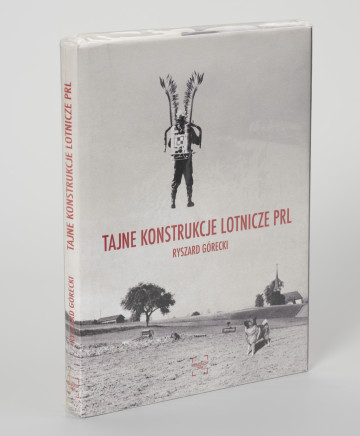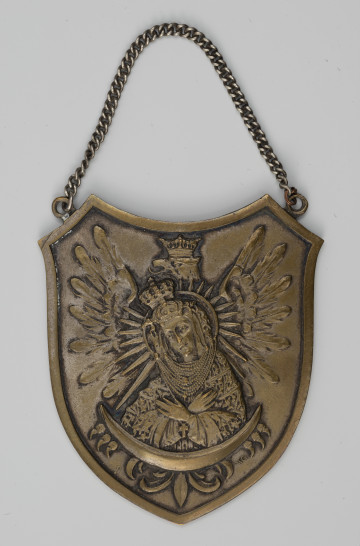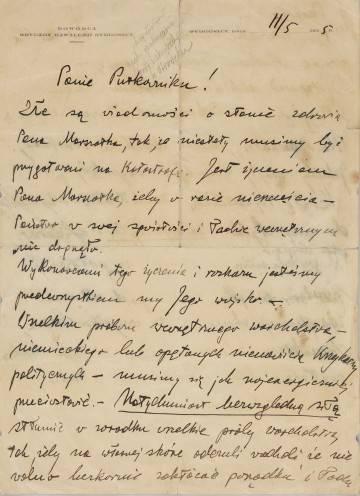
Ryszard Górecki. Tajne konstrukcje lotnicze PRL | Ryszard Górecki. Secret Aerial Structures of the People's Republic of Poland,
2009
National Museum in Szczecin
Part of the collection: Everyday life in the Polish People's Republic
The presented signalling device was an element of the Polish People's Republic border protection system. It consists of two metal poles in which infrared sensors were mounted. The interruption of the beam triggered an alarm in the guards of the Border Protection Forces – a military formation that existed in the years 1945–1990. As in the case of other people's democracy countries, the borders of the Polish People's Republic were heavily guarded: surrounded by guard towers, barbed wire fences and entanglements, with strips of ploughed land running between them, as well as tracking dogs at the disposal of WOP soldiers. This was meant to make it difficult to cross borders illegally or to make it easier for the services to control the number of attempts made or to catch those who were trying to flee the country. Systemic signalling devices, invisible to fugitives, which were installed gradually at various sections of the border since 1960, were extremely helpful. In the communist era, legal travel abroad for the average citizen was almost impossible. A passport was needed, which had to be sought at each departure and handed over immediately upon return, in order to be able to recover the identity card held at the office at the time of departure. The issue of such a document was often associated with the consent to cooperate with the Security Service, economic or military intelligence. Before 1990, Poles often tried to illegally cross the border in pursuit of a better life. Until the end of the 1960s, approximately 60 thousand people were detained while trying to escape from Poland. The communist border protection system began to crumble with the end of this period. The Systemic Signalling Device contained in the collections of the The Dialogue Centre Upheavals, the Department of the National Museum in Szczecin comes from the Świnoujście-Ahlbeck border section, where this type of apparatus functioned for the longest time, until the beginning of the 21st century. Agnieszka Kuchcińska-Kurcz
Author / creator
Object type
signaling device
Technique
industrial installation, manufacturing
Material
metal, colourless glass
Origin / acquisition method
donation
Creation time / dating
Creation / finding place
Owner
Muzeum Narodowe w Szczecinie
Identification number
Location / status

2009
National Museum in Szczecin

1936
National Museum in Szczecin

1935
National Museum in Szczecin
DISCOVER this TOPIC
National Museum in Szczecin
DISCOVER this PATH
Educational path